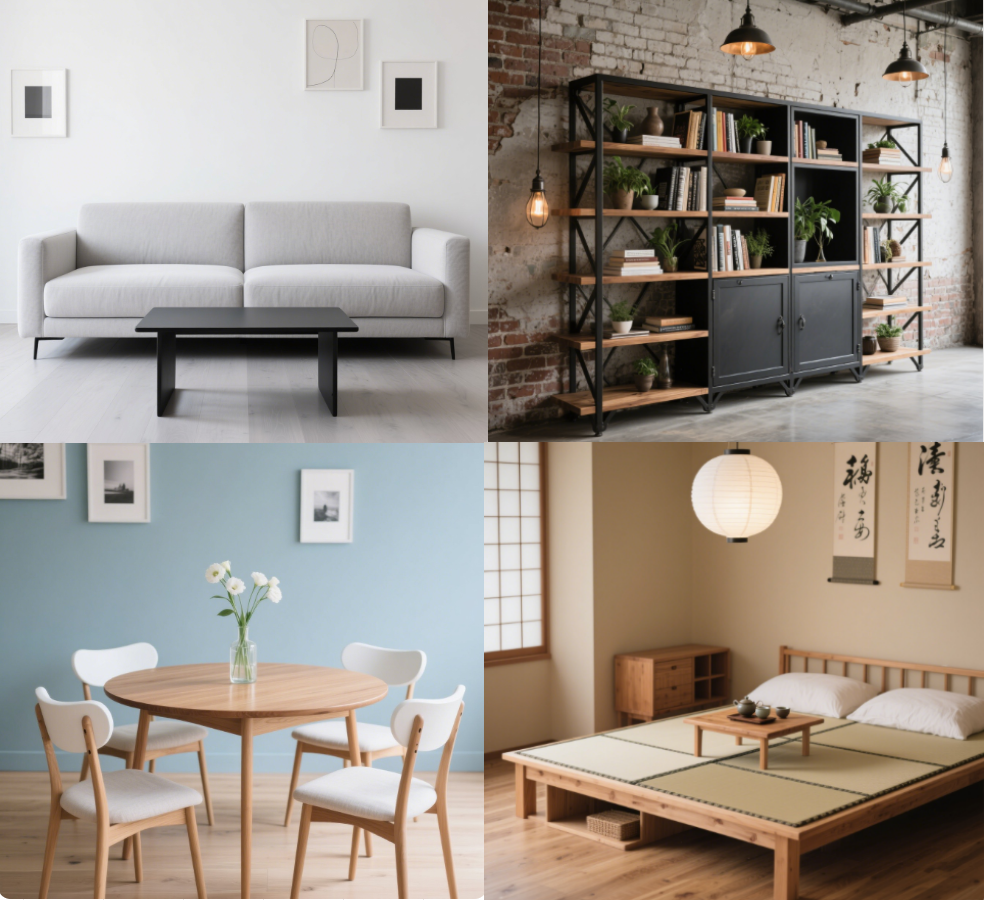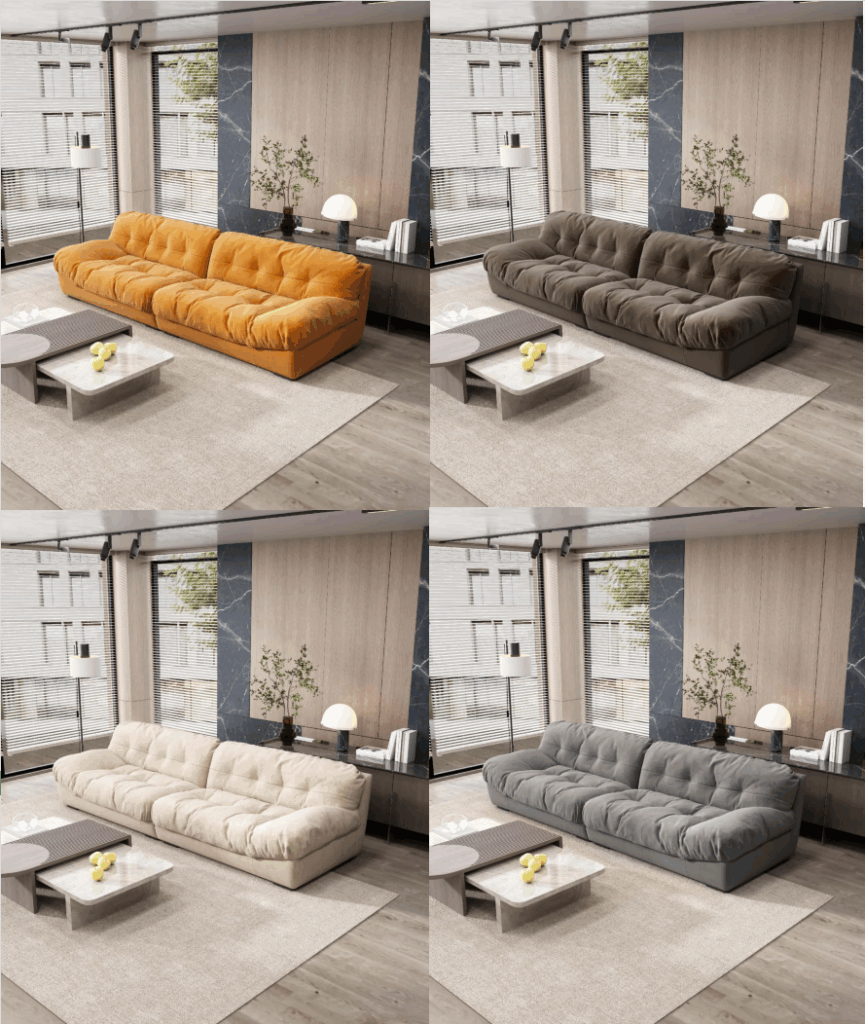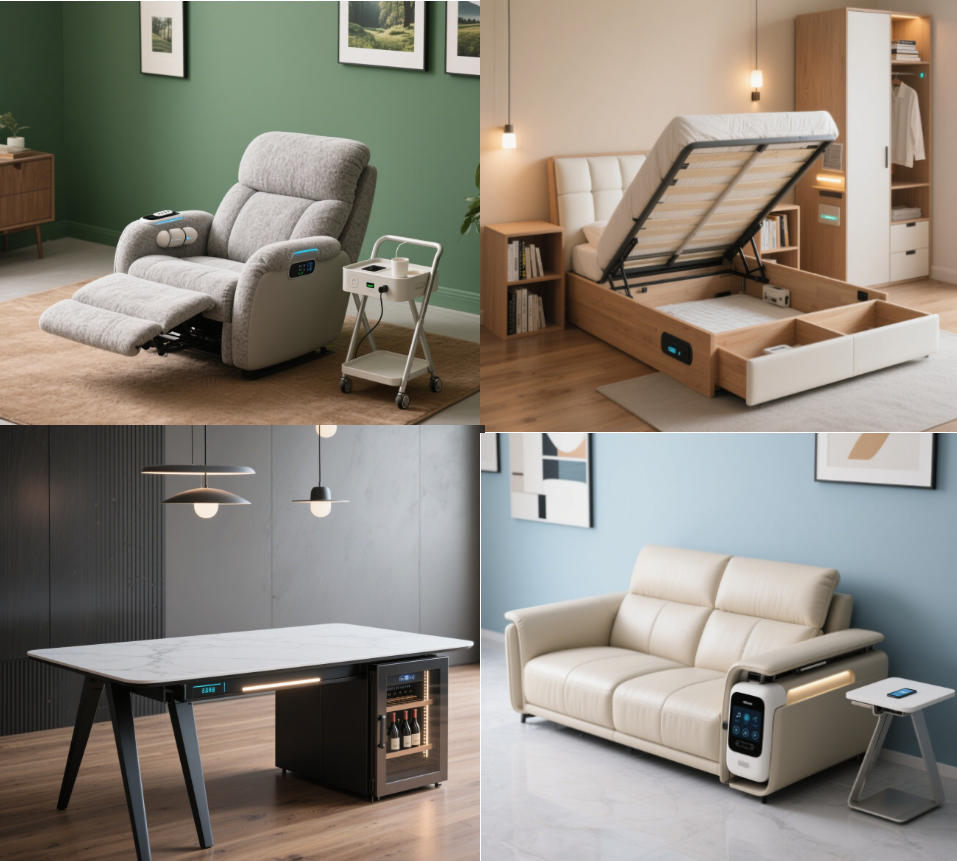With the continuous rise in per capita GDP and disposable income, Chinese consumers’ consumption concepts are evolving rapidly. The emerging generation of “post-95s” and “post-00s” has become the mainstay of the home furnishings market. Along with changes in family structures, such as the impact of the two-child and three-child policies, people’s pursuit of home space experience has shifted towards personalization and high quality. Home is no longer just a place to live; it has become a “spiritual space” that carries emotional needs.

Young consumers are no longer satisfied with generic furniture. They seek unique home styles, from the minimalist Scandinavian style to the classic Chinese style, from the industrial style to the Bohemian style. They expect furniture to align with their living habits and hobbies. For example, music enthusiasts may customize furniture with built-in instrument storage, while photography lovers may require dedicated spaces to display their works and store equipment. To make the most of limited housing space, innovative furniture features such as foldability and intelligent functions are in high demand. Foldable furniture combines lightness, aesthetics, and technology, enhancing the flexibility of space layout. The sales of furniture with hidden functions have increased by 158% year – on – year, and hidden clothes dryers have seen a growth of over 300% year – on – year.

The trend of whole-house customization is on the rise. Instead of purchasing individual furniture pieces separately, consumers now prefer one-stop customization solutions that ensure a unified style and coordinated functionality across all living spaces, including the living room, bedroom, and kitchen. For instance, custom home furnishing companies like Sofia have developed their own DIY Home integration system, streamlining the process from consumer demand to factory production, and realizing the perfect transformation from design drawings to actual products. Furniture companies need to enhance communication with consumers, leveraging digital tools such as online design platforms, virtual reality (VR), and augmented reality (AR) technologies, allowing consumers to participate in the design process and preview the final results in real-time.

Environmental Sustainability: A Green Choice for a Better Future
As environmental awareness continues to grow, consumers now prioritize the eco – friendliness of furniture. They expect furniture to minimize its environmental impact throughout the production, use, and disposal processes while also ensuring their own health and safety. According to the China Home Furnishing Industry Association, the market share of natural and environmentally friendly materials in home furnishings has increased from a relatively low level in the past to 35% in 2023, and it is expected to exceed 40% in 2024, with a continuous upward trend.

Trend Analysis
- Growth Trend: The market share grew at an average annual rate of over 8% from 2021 to 2023, doubling compared to 2021, and is expected to maintain rapid growth in 2024.
- Driving Factors:
- Consumer health needs: Focus on formaldehyde emission and the safety of natural materials.Policy guidance: Upgrading of China’s environmental protection standards (e.g., popularization of E0-grade panels).
- Industry transformation: Home furnishing brands launch eco-friendly product lines using bamboo, recycled plastics, water-based paints, etc.
- Future Outlook: Natural materials (such as solid wood, cotton-linen, and degradable composite materials) may become the mainstream, pushing the market share toward 50%.
Consumers are more inclined to choose furniture made from environmentally friendly materials such as solid wood, recyclable metals, and eco-friendly paints. Solid wood furniture, with its natural texture and environmental advantages, is particularly popular, with female consumers accounting for more than 40% of solid wood furniture buyers. In response, furniture manufacturers are ramping up their efforts in the research, development, and application of eco – friendly materials, and adopting green production processes. For example, Sofia collaborates with universities and upstream suppliers to continuously upgrade the environmental standards of its panels and participates in formulating national and industry-wide green standards, driving the green development of the entire industry. During the production process, companies are optimizing workflows to reduce energy consumption and waste emissions. In product design, emphasis is placed on disassembly and recyclability, making it easier for furniture to be recycled at the end of its life cycle. Environmental sustainability is not only a consumer demand but also a key factor for companies to enhance their brand image and market competitiveness.
Comfort and Practicality: Returning to the Essence of Life
In the fast – paced modern life, consumers attach great importance to the comfort and practicality of furniture, expecting it to bring convenience and a pleasant experience to their daily lives. In the US market, sofas, mattresses, and bedroom furniture account for 34%, 32%, and 31% of the market share respectively, which fully demonstrates consumers’ focus on the comfort of basic living scenarios such as rest and sleep.

When choosing sofas, consumers favor those made from soft materials and designed with ergonomics in mind. Cream-style and cloud-like sofas, which are particularly popular among young consumers, with those under 35 years old accounting for over 60% of the buyers. These sofas create a cozy home atmosphere with their comfortable seating and warm appearance. In the mattress market, consumers look for products that conform to the body’s curves and provide excellent support to ensure a good night’s sleep. At the same time, the practicality of furniture is also highly valued. Multi-functional furniture designs are in vogue. For example, transformable dining tables can be expanded during meals and folded up to save space when not in use, and beds with built-in storage meet the needs for organization. Custom – made large – sized desks that can be used for both work and leisure are also popular due to their simplicity, individuality, and practicality. Furniture companies should conduct in-depth research on ergonomics, consider various life scenarios, and optimize the structure and functions of their products to create more comfortable and practical furniture that can enhance consumers’ quality of life.
In conclusion, these three consumer demand trends in the furniture industry—personalization and customization, environmental sustainability, and the combination of comfort and practicality—are here to stay. Furniture companies that can adapt to these trends, innovate continuously, and meet consumers’ evolving needs will be well-positioned to thrive in the highly competitive market. What are your thoughts on these trends? Do you have any unique experiences in choosing furniture? Feel free to share them in the comments section!


